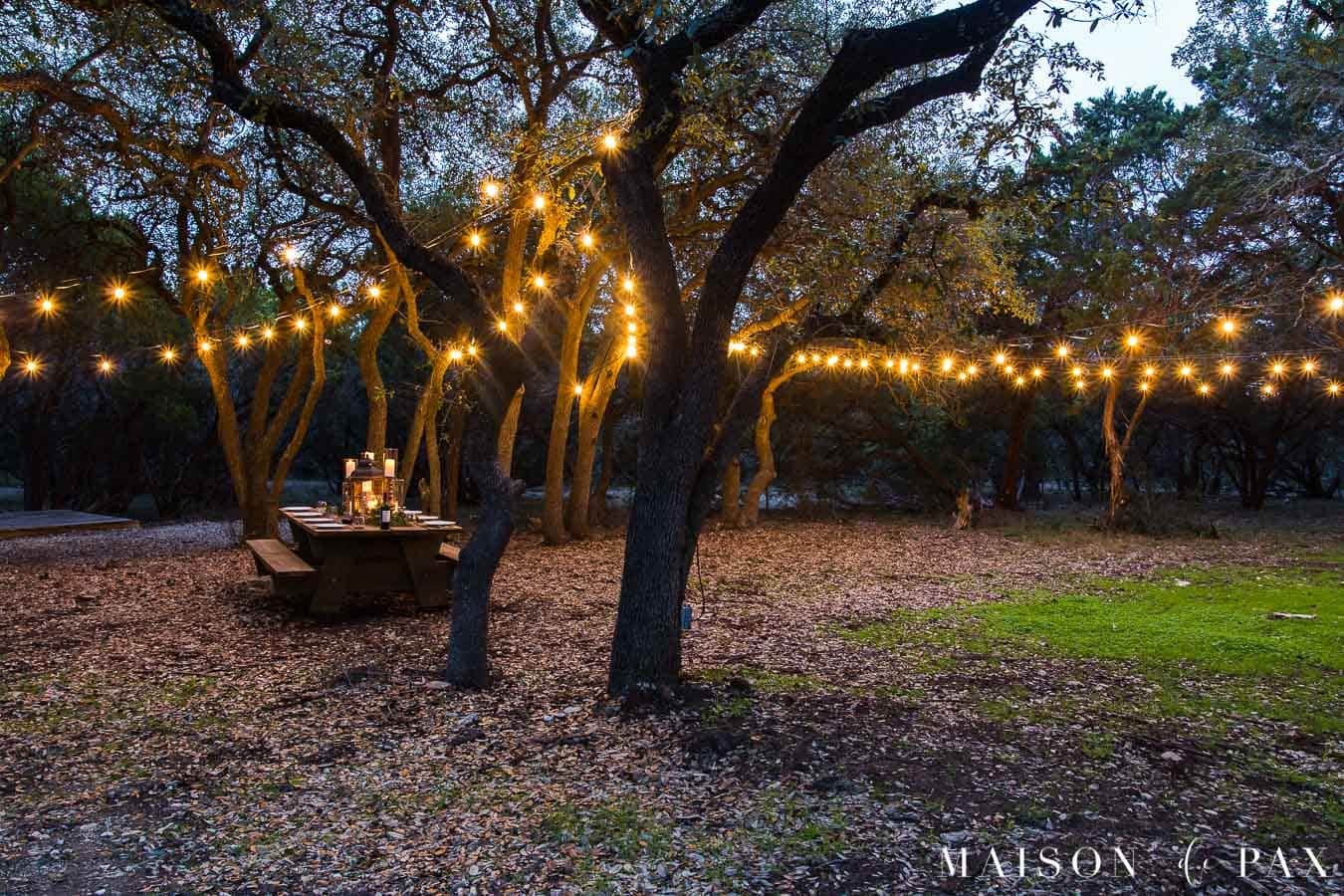String lights can transform any outdoor space into a magical retreat. But for a long-lasting, professional look, many homeowners wonder: Do String Lights Need Guide Wire? This guide will delve into the benefits of using guide wires, explore alternatives, and provide expert tips for hanging your string lights securely and beautifully.
Why Use Guide Wires for String Lights?
While simply draping string lights might seem like the easiest option, using guide wires offers several key advantages, improving both the appearance and longevity of your lighting setup.
Enhanced Stability and Support
The primary benefit of guide wires is the added support they provide. String lights, especially longer strands or those with heavier bulbs, can sag significantly over time. A guide wire acts as a sturdy backbone, preventing sagging and ensuring your lights maintain a neat, even appearance.
Reduced Stress on Electrical Wiring
Without support, the weight of the string lights puts a strain on the electrical wire. This can lead to damage, potential electrical hazards, and a shorter lifespan for your lights. Guide wires distribute the weight evenly, relieving stress on the wiring and minimizing the risk of damage.
Cleaner, More Professional Look
Guide wires allow you to achieve a taut, even hang for your string lights. This results in a more polished and professional aesthetic, elevating the overall look of your outdoor space.
Ideal for Long Spans
For lighting larger areas, guide wires are essential. They provide the necessary support to span longer distances without excessive sagging, making them perfect for lighting patios, decks, and large yards.
Alternatives to Guide Wires
While guide wires offer the most robust support, there are alternative methods for hanging string lights, depending on your specific needs and aesthetic preferences.
Direct Attachment to Structures
If you have existing structures like fences, pergolas, or trees, you can attach string lights directly to these. Use hooks, clips, or zip ties to secure the lights, ensuring they are evenly spaced and supported.
Draping Through Trees
For a more whimsical look, you can drape string lights through tree branches. This method works best with lightweight lights and shorter spans. Be mindful of the weight on the branches and avoid overloading them.
Tension Wire Kits Without Full Guide Wire Systems
These kits utilize a thinner, more flexible wire that creates a gentle curve for the lights. They are ideal for shorter spans and lighter-weight lights where a full guide wire system might be overkill.
Choosing the Right Materials
If you decide to use guide wires, selecting the right materials is crucial for a secure and long-lasting installation.
Stainless Steel Cable
Opt for stainless steel cable, as it is resistant to rust and corrosion. This is particularly important for outdoor applications, where the cable will be exposed to the elements.
Hanging Kits
Consider purchasing a string light hanging kit. These kits typically include stainless steel cable, turnbuckles, eye hooks, and cable clamps, providing everything you need for a complete installation. These string light hanging kits are a great option.
Zip Ties
Use black zip ties to secure the string lights to the guide wire. Black zip ties are UV-resistant and blend seamlessly with the wire and lights.
Step-by-Step Guide to Hanging String Lights with Guide Wire
Follow these steps to hang your string lights securely and achieve a professional look.
- Plan Your Layout: Before you begin, plan the layout of your lights. Determine the placement of the guide wires and the desired swag or tension of the lights.
- Install Eye Hooks: Attach eye hooks to sturdy supports such as trees, posts, or your house. Ensure the hooks are securely fastened and can bear the weight of the lights and guide wire.
- Thread and Tension the Guide Wire: Run the stainless steel cable through the eye hooks, creating a continuous line. Use turnbuckles to tighten the cable, creating a taut support system.
- Attach String Lights to the Guide Wire: Using zip ties, attach the string lights to the guide wire, spacing them evenly. Start at the plug end to keep the strand in place.
- Final Adjustments: Once all the lights are attached, make any necessary adjustments to the tension of the guide wire and the spacing of the lights.
Considerations for Different String Light Types
The type of string lights you choose can influence whether or not you need a guide wire.
Globe Lights
Globe lights, particularly those with glass bulbs, are heavier and more prone to sagging. Guide wires are highly recommended for globe lights, especially over longer spans.
LED String Lights
LED string lights are typically lighter than traditional incandescent lights, making them a good option for draping or direct attachment. However, guide wires can still enhance the appearance and longevity of your LED string light setup, especially if using commercial grade outdoor string lights.
Shatterproof String Lights
Shatterproof string lights are lighter and more durable. While you might get away without guide wires for shorter runs, adding them will provide better support and prevent drooping.
Do String Lights Need Guide Wire? – Conclusion
While not always strictly necessary, using guide wires for string lights offers significant benefits in terms of stability, longevity, and aesthetics. By investing in the right materials and following these expert tips, you can create a stunning outdoor lighting display that will last for years to come. Whether you opt for a full guide wire system or explore alternative methods, remember to prioritize safety and secure installation for a truly magical outdoor experience.

